WORLD TRAVEL NEWS ARTICLE
SPAIN
Spain has evolved over recent decades to become a modern country that’s attractive to tourists for more reasons than paella and sunshine. The transport system has been upgraded, making it easier to get across the often mountainous terrain in some parts of the country. New fast railway networks, plus the introduction of modern metro and tram networks whizz you around the big cities. At the same time the old charm of Spain can be seen, with Roman remains, Arab watchtowers and Baroque architecture in abundance.
The countryside offers as much variation as the historic cities, from the gorgeous green landscapes of the Atlantic coast to the barren plains of La Mancha. Spain is the world's 51st largest country, and shares borders with Portugal, Gibraltar, Morocco, France and the tiny principality of Andorra, and also includes the Balearic Islands in the Mediterranean, the Canary Islands in the Atlantic, and some uninhabited islands.
Mainland Spain is the second highest and most mountainous country in Europe, with an average height of 610m. The mountains of the Pyrenees stretch for around 400 kilometres from the Atlantic coast to the Mediterranean Sea. Some of the peaks are over 1,524 metres.
The Spanish landscape is also famous for its vast central plateau, which includes Castile and León, La Mancha and Extremadura. The climate in the country is as varied as the landscape, from the continental Mediterranean climate in peninsular cities like Madrid, to the sub-tropical Canary Islands and even semi-arid south eastern heat, there's no getting away from the fact that on the whole, Spain is a warm country. For more detailed weather information visit www.worldweather.org
Spanish History
Evidence of population along the Iberian coast dates back to prehistoric times. Spain was populated by the Iberians and the Celts until around 1100 BC, when Phoenician seafarers set up trading colonies in Cadiz and along the Spanish coast. After the fall of Phoenicia, the Iberian Peninsula was ruled by Carthage which is now in Tunisia. Then, following the Punic Wars, became occupied by the Romans who ruled for over six centuries.
After the fall of the Western Roman Empire in the fifth century, the Visigoths, a Germanic race took charge, until the Muslims of northern Africa launched an invasion across the Strait of Gibraltar in the eighth century and occupied most of the peninsula for the next seven centuries. Christian kingdoms to the north of Spain began to gain power and influence and gradually drove the Moors southwards. The last Moorish kingdom, Granada (the eastern half of present-day Andalusia), was conquered in 1492.
When Christopher Columbus discovered ‘The New World, a discovery which coincided with the expulsion of Jews and Moors from Spain, Spanish history was set on a new path. Treasure from the vast Spanish empire turned Spain into one of the most influential European countries, but at the same time the country was permanently at war with one country or another and their resources were constantly drained. The Bourbon Dynasty took the Spanish throne at the beginning of the 18th century, and Spain was heavily influenced by France for the next 100 years, until Napoleon's armies were defeated during the Peninsular War.
Spain was a divided country during the 19th century with several forced changes of government making life unstable. King Alfonso XIII was forced to abdicate in 1931, when Spain became a republic. The Spanish Civil War raged from 1936 to 1939 and was a prelude to World War II. The country was ruled by the dictator, Franco and largely ignored by the rest of Europe until the US used it as a a strategic base during the Cold War – the first US bases opened in the 1950s. Foreign tourism helped make the country more prosperous and when the Spanish dictator Franco died in 1975, King Juan Carlos was restored to the throne and Spain became a modern democratic state.
Getting There
Madrid Airport is 13 kilometres northeast of the city, with regular bus and underground services into the city.
Barcelona Airport is 3 kilometres southwest of the city and there are good rail and bus services into the city. It's 30 minutes by taxi.
Alicante Airport is 12 kilometresm southwest of the city, with regular bus and taxi services . A taxi connection runs between Alicante and Valencia Airport.
Malaga Airport is 10 kilometres southwest of the city and there are good bus and train links throughout the day.
Valencia Airport is 8 kilometres west of the city, with an ‘aero bus’ available to take passengers into the city as well as public bus services and taxis.
If you prefer a longer, more restful journey, you can travel to Spain by sea, the main ports being Santander on the north coast and Bilbao.
For information on the latest visa requirements visit www.projectvisa.com
Money
The currency in Spain is the Euro. Money can be changed in all high street banks, and also in travel agencies, larger hotels and some airports. For up to date exchange rates visit www.xe.com
Credit and debit cards are widely accepted, as are traveller's cheques, best taken in Euros or Pounds Sterling to avoid extra charges. If you're cashing traveller's cheques, the best advice is to use either a bank or an exchange bureau. Banks are usually open from 8:30am to 1:30pm, Monday to Friday.
Shopping
A tax (IVA) of 16 per cent is charged on most goods bought in Spain. If you’re travelling from outside the EU you could be eligible to claim a refund of some or all of this tax - if you buy the goods from a store displaying Global Refund Tax Free Shopping. Ask for Tax Free Cheques and keep these, along with your receipts. You’ll need to show them to customs at the airport before you leave, if you want to claim your money back.
In the capital, Madrid, there are plenty of opportunities for shopping, especially in the district of Salamanca. If you’re looking for designer names, you can find Armani, Chanel, and Versace here (among others) and for something with a bit more Spanish flavour you could seek out the work of Spanish designer Adolfo Domínguez, on Calle Ortega y Gasset. If you’re looking for something a little more unusual, try Mesquida, on Calle Mayor 22, which has a selection of religious and devotional objects, or perhaps the Manuel Gonzales Contreras, selling Spanish guitars. Pick up a traditional Spanish cape at Seseña, on Calle Cruz 23.
If you want a chance to browse leisurely in Madrid, it’s a good idea to plan your visit between March and June or September and October. The heat will be too oppressive in July and although the city may be a little quieter in August as the locals take their holidays then, it too can be very hot.
Barcelona is a must for shopping and if this is what you have in mind, you won’t be disappointed, it boasts a shopping strip that stretches for 5 kilometres. It starts at the water's edge at Port Vell and has all types of shops from international chain stores, to exclusive (and expensive) designer shops and department stores. The most famous shop in Barcelona is the El Corte Inglés, on Plaça de Catalunya. For souvenir hunting the best places are La Rambla and the Barri Gòtic. There’s a traditional market on Plaça Nova every Thursday, except during August, where you can find lovely Catalan black pottery, hand-woven baskets and gorgeous hand crafted Barcelona lace.
Bilbao hasn’t always had a good reputation for its shopping, but things are changing, and now it’s a trendy, bustling city where fashion lovers can peruse collections from national and international designers in Ensanche and the Old Town. The pedestrianised Old Town showcases the best shops, which are ideally placed among historical monuments and Spanish cultural institutions – not forgetting the largest covered city market in Europe, The Riverside, which has approximately 200 shops on three floors. Here you can find Basque crafts, pottery and crystal as well as good quality leather items and even traditional furniture.
Lladró porcelain is another Spanish speciality and is made on the outskirts of Valencia at Taverna Blanques. In addition to a museum and an interesting exhibition, you can buy the porcelain there, and there’s a big selection of items on sale in the flagship store in Valencia city centre.
Spanish Food
Spanish food can be sophisticated and delicious, and like most European countries, there are dishes specific to certain areas as well as dishes that you’ll find all over the country. Some of the best known Spanish delicacies include potato omelette ‘tortilla de patata’, stews, different varieties of sausage – embutidos, chorizo, and morcilla – Serrano ham, and cheeses. There are also authentic hearty bean dishes that make the most of chickpeas, lentils and green beans, and delicious regional breads.
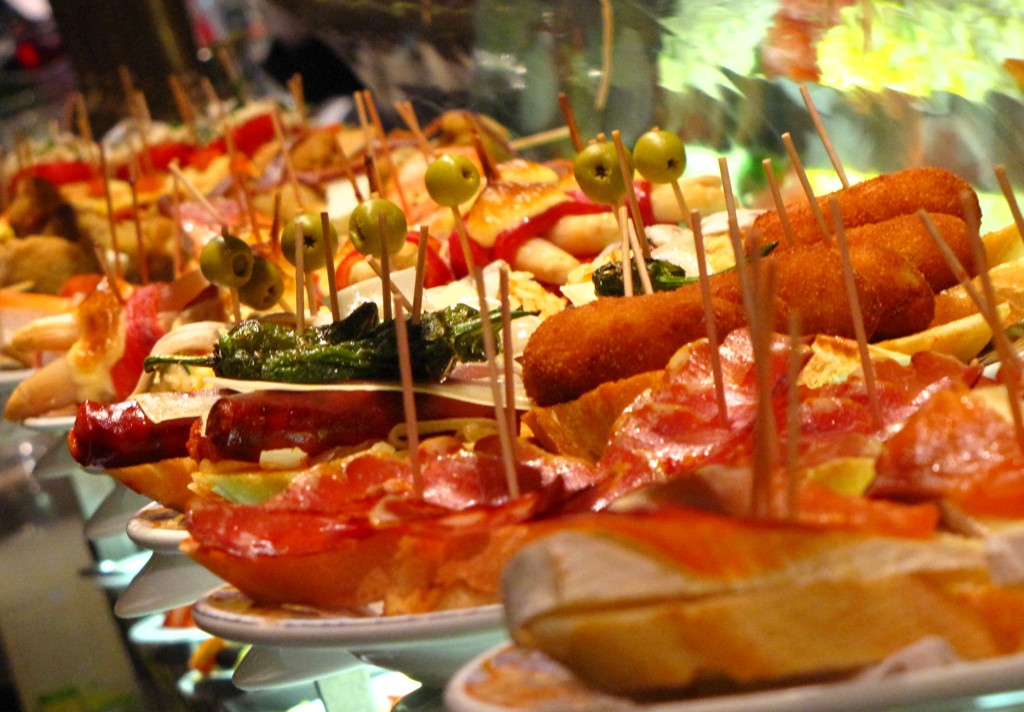
A selection of Tapas
Eating out in Spain depends on how hungry you are. If you want a full meal, go to a restaurante or comedor. A comedor is a less expensive establishment where you can get a reasonably priced meal. If you’d prefer a snack, go for tapas or raciones (more filling than tapas) at a bar. Bars are really popular eating establishments in Spain and you’re more likely to get a good variety of local delicacies if you opt for the tapas or raciones instead.
Tipping is not expected in restaurants unless you think the service merits it: the amount is up to you, but five to ten percent of the bill is a good starting point. The other thing to be aware of when you eat in a medium or expensive restaurant is there may be a charge for IVA usually seven per cent. It should be stated on the bill.
Where to go in Spain
Madrid
Spain’s lively capital city, Madrid, is also Europe's third largest city. Madrid is the core of Spain, both financially and politically, and home to the Royal Family and the illustrious Golden Triangle – the Prado, Reina Sofía and Thyssen-Bornemisza art museums. Central Madrid is often known as Madrid of the Austrias, and is always popular with tourists. It’s between the Palacio Real and the Puerta del Sol, a short walk from the city's main street, the Gran Vía.
The present king of Spain, Juan Carlos I, currently lives in the Zarzuela Palace outside Madrid, so Philip V’s 3000-room Palacio real (or Royal Palace) is used only for state functions. The rest of the time, the palace is open to tourists. You can see the Hall of Halberdiers and Hall of Columns with the Throne Room, and the lavish private apartments of Charles II. A tour of the palace usually takes a couple of hours.

Museo del Prado, Madrid
The Prado Museum is one of the best art galleries in Europe, with a collection over 4,000 - 16th- to early 19th-century paintings including masterpieces by Botticelli, Titian, Rembrandt and Velázquez, and a fascinating study of Goya ,showing his progress from carnivals and bright colours to the Dark Period. The Thyssen-Bornemisza Museum was once the private collection of Hans-Heinrich Thyssen-Bornemisza, and now houses 800 sculptures, paintings and other works of art by Fra Angelico, Van Eyck, Rubens and many more.
Alicante
Alicante is a favourite European holiday destination, receiving several millions of visitors every year. The city has long been renowned for long sandy beaches, fun festivals and nightlife. Alicante is the second largest city in the Valencian Country and has an African theme with hawkers selling African carvings along the waterfront. In the Central Quarter there are some attractive historic baroque buildings, evidence of the city’s past role as a major sea port.
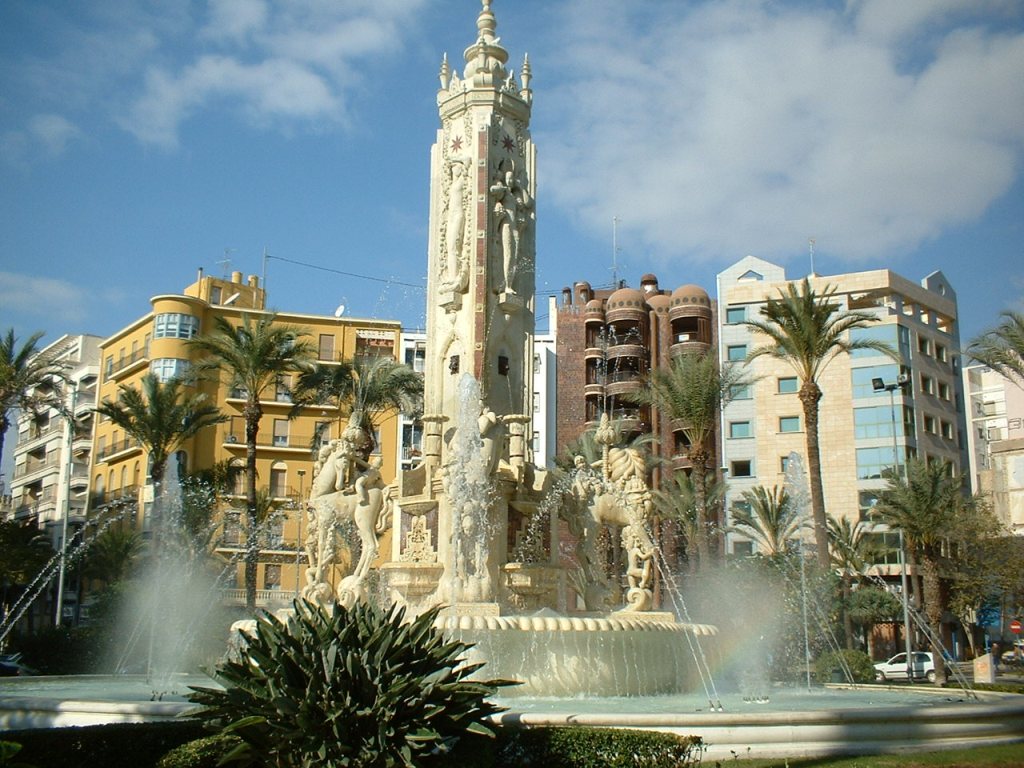
Luceros Fountain, Alicante
Barcelona
Barcelona is the city of choice for many of the world's top architects, many of whom have been inspired Barcelona's most famous son, architect Antoni Gaudi. His masterpiece is the unfinished cathedral Sagrada Familia but his influence can be seen all over Barcelona. Gaudí's unfinished cathedral is probably the city’s most famous landmark. The Spaniards are still trying to decide who should pay for its completion, so whether it will ever be completed remains to be seen...
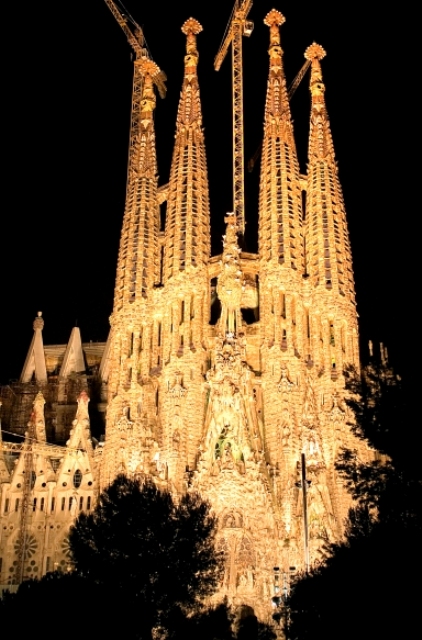
A floodlit Sagrada Familia, Barcelona
The Picasso Museum is also a major tourist attraction, and is housed in two 15th-century palaces near the Parc de la Ciutadella. The collection contains everything Picasso-related – from Picasso’s childhood sketches and paintings from his Blue and Pink Periods to memorabilia, ceramics and more.
While you’re in Barcelona, La Rambla is worth visiting. It’s a pretty area of shopping avenues lined with trees, cafés, restaurants, flower stalls, shops and newspaper stands, and it’s the perfect place to stroll around, relax a bit and take some of the city’s atmosphere.
Bilbao
Head to Bilbao if you want a taste of the best food Spain can offer – Basque cuisine is famous for its excellence and you’ll find some of the best restaurants of the region in Bilbao. For those of you more interested in culture than cuisine, the Guggenheim Museum Bilbao is one of the world’s most famous museums, with visitors flocking to view the vast collection of European and American art.

Guggenheim Museum, Bilbao
Palma, Mallorca
Palma is a popular holiday venue. It has plenty of charm with its traditional cafés and bars, and fishermen who still mend their nets by hand on the harbour's edge. You can see the traditional island crafts of glass-blowing, lace-making and olive-wood carving here, and Le Seu is a beautiful place to get lost in. On the waterfront, Palma's amazing Gothic cathedral is one of the largest in the world, with shades of Barcelona’s Antonio Gaudí, the architect who remodelled it.
A leisurely stroll to the seafront will give you the opportunity to see everything from traditional fishing boats to super-yachts and even luxury cruise liners. Testament to Mallorca’s maritime flavour is the Maritime Exchange at the eastern end of the sea front, and some of the historic buildings that put you in mind of Palma's maritime heyday
The Palau Reial de l'Almudaina is a monument to the historical conflicts between the Christians and the Moors. It has an intriguing blend of architecture with gothic and Moorish influences and is amazing to look at.
Seville
Seville’s largest tourist attraction is the cathedral, which dates from the 15th century. It is built on the site of a mosque used by the Moors, but later converted into a cathedral. In the 15th century, plans were made to build a church ‘so large that everyone who sees it will think we are mad’. Whether they were in fact mad, is still up for discussion.
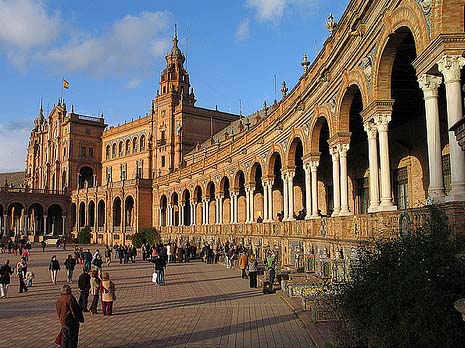
Plaza Espana, Seville
Also in Seville, the Hospital de los Venerables Sacerdotes is worth visiting. It was originally used as a rest home for priests in Santa Cruz, but the old building is now used as a hub for promoting culture in Seville, and the beautiful patio is said to be one of the prettiest in the Andalucian region.
Toledo
Surrounded on three sides by the River Tagus (Rio Tajo), Toledo still has parts of its original city wall, and is popular with photographers and casual tourists alike. The general appearance of the city has hardly changed in the past 400 years. Toledo is home to one of Spain's most impressive cathedrals, and houses a few gems. There’s the Sacristy art collection, some ornately carved choir stalls and the strange Transparente, a hole cut into the main chapel to give it some extra illumination.
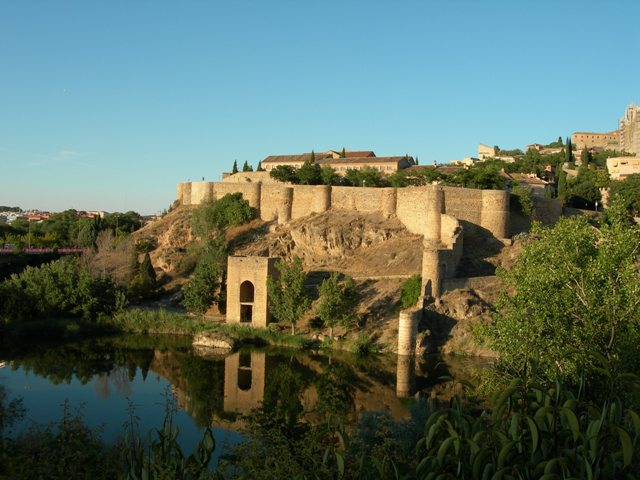
Toledo
For a more modern tourist attraction, take a look around the Centro de Interpretación del Toledo Histórico (CITO). Although it is housed in a historic building, the former church of San Marcos, it couldn’t be more up to date, featuring an amazing state-of-the-art multi-media interpretation of the city's history along with some fascinating exhibits.
As well as beautiful cities, Spain has much more to offer the tourist.
Alhambra
Overlooking the city of Granada, the Alhambra is an unmissable piece of Moorish architecture. The name Alhambra means ‘the red’ in Arabic, and the building gets its name from the stunning reddish colour of the brickwork. The construction started in the 13th century, and took almost a century to complete. The Alhambra was intended to be both a fortress and a palace.

Alhambra Palace, Granada
Universal Mediterranea
For some good old fashioned (and more up to date) fun and games, take the family to the massive theme park. Opened in the mid 1990s, it’s incredibly busy all year round, so be prepared to queue. The park is designed to be a journey through five worlds (Mediterránia, Far West, Mexico, Polynesia and China) and has all types of rides and attractions.
Situated on the coast, between Salou and Vila-seca on Spain’s Costa Dorada, and isn’t just for the very young. There are grown-up shows every night. For the more adventurous holidaymaker, there are some impressive rides to get you screaming – the Stampida roller coaster ride, and – for added drenching potential – there’s the Grand Canyon Rapids and Tutuki Splash water rides. It’s a huge park and you can book into one of the on-site hotels if you prefer to spend a few days here rather than rushing around.
Garajonay National Park
Travel over to the island of La Gomera in the Canary Islands, and you can experience the stunning natural beauty of Garajonay National Park. The park is where you’ll find some of the most beautiful scenery in the area and is another very popular area for tourists. Garajonay is a designated national park, and was also given UNESCO World Heritage site status in 1986.
The Caves of Drach
The Caves of Drach are arguably the most famous tourist attractions on the island of Mallorca. The caves consist of three chambers as well as Lake Martell, one of the largest subterranean lakes in the world. If you visit the caves you can take a boat ride on the lake and see the beautiful stalagmites and stalactites, while you’re listen to the sound of classical music as part of the experience.
Sand and Sea
Spain is one of those countries that’s always associated with beach holidays, and that’s hardly surprising as some of the most popular resorts are on mainland Spain, the Balearic Islands and the Canary Islands.
Benidorm, surprisingly, is still the most visited holiday resort in Spain, probably because the beaches are amazing. Not to be outdone on the tourist theme though, Benidorm doesn’t just rely on its golden sands to entice visitors these days, there are parks and golf courses, plus Aiguera Park and amphitheatre offering a slice of complimentary culture too.
The biggest and busiest resort on the Costa Brava is Lloret de Mar, which the tourists have flocked to for sunshine for the last 50 years. It’s a high-rise resort, and very busy, although it’s quieter on the western side. Lloret de Mar is very popular with younger tourists, especially the 18–30 age group, groups of teenagers on their first holiday abroad, and young families, so if it’s a quiet break you’re looking for, it’s probably best to visit somewhere else in Spain.
Torremolinos is the oldest resort on the Costa del Sol, and is equally popular with the Spanish as with other tourists. Parts of the original picturesque fishermen's quarter of La Carihuela remain intact, and if you head over to those areas you’ll find a completely different atmosphere to the rest of the resort. As for the rest of Torremolinos, you’ll find imposing high-rise hotels and apartment blocks, although there has been an attempt to improve the resort with some attractive landscaping... but it’s another very busy resort and not for anyone looking for unspoiled charm.
Over to Mallorca and the purpose-built resort of Palma Nova is very popular with British holidaymakers on a package tour. Its plus points are its lovely golden sandy beaches and many family attractions which make it so popular with the holidaymakers. Palma Nova merges with the lively resort of Magaluf, which is notorious for partying and nightlife.
Another Balearic Island, Ibiza, is synonymous with clubs, bars, and ‘binge drinking’, which is unfortunate but in some cases probably fair. San Antonio and San Antonio Town comprise Ibiza's second-largest resort, recently renamed Sant Antoni de Portmany. If you want the nightlife, head for the high-rise hotel backdrop of San Antonio Town, which is to the northern end of the bay of Portmany. The quieter areas of San Antonio are to the south of the bay.
The Canary Islands are another tourist Mecca, and Las Palmas is the biggest city of the Canaries. It does has its very own golden beach, great shopping and nightlife. If you’re interested in a resort that comprises both beach and culture then Las Palmas is the place to visit. It has an historical district where you can lap up Spanish-Colonial architecture.
Playa Blanca on Lanzarote is famous for its year-round sunshine and is the third biggest resort on Lanzarote. Although it has been catering for tourists for some years, it’s not quite as developed as some of the other Lanzarote resorts, yet there are plenty of facilities to keep you entertained, with a long promenade of bars, shops and restaurants and lovely views of beaches.
Tenerife's Puerto de la Cruz must be good, it’s said to have one of the highest return rates for guests of any European resort. The beaches are lovely, there are some pretty buildings to investigate and it’s easy to find places to eat and drink. The nightlife is good and it’s within easy reach of the Teide National Park. Puerto de la Cruz is perennially popular with people who want a relaxing holiday rather than a lively one, and the gorgeous sunny climate also means that it’s a year-round venue for holidays. A fascinating and thought provoking exhibition in the town of Guimar are The Pyramids of Guimar. For more information visit www.piramidesdeguimar.es
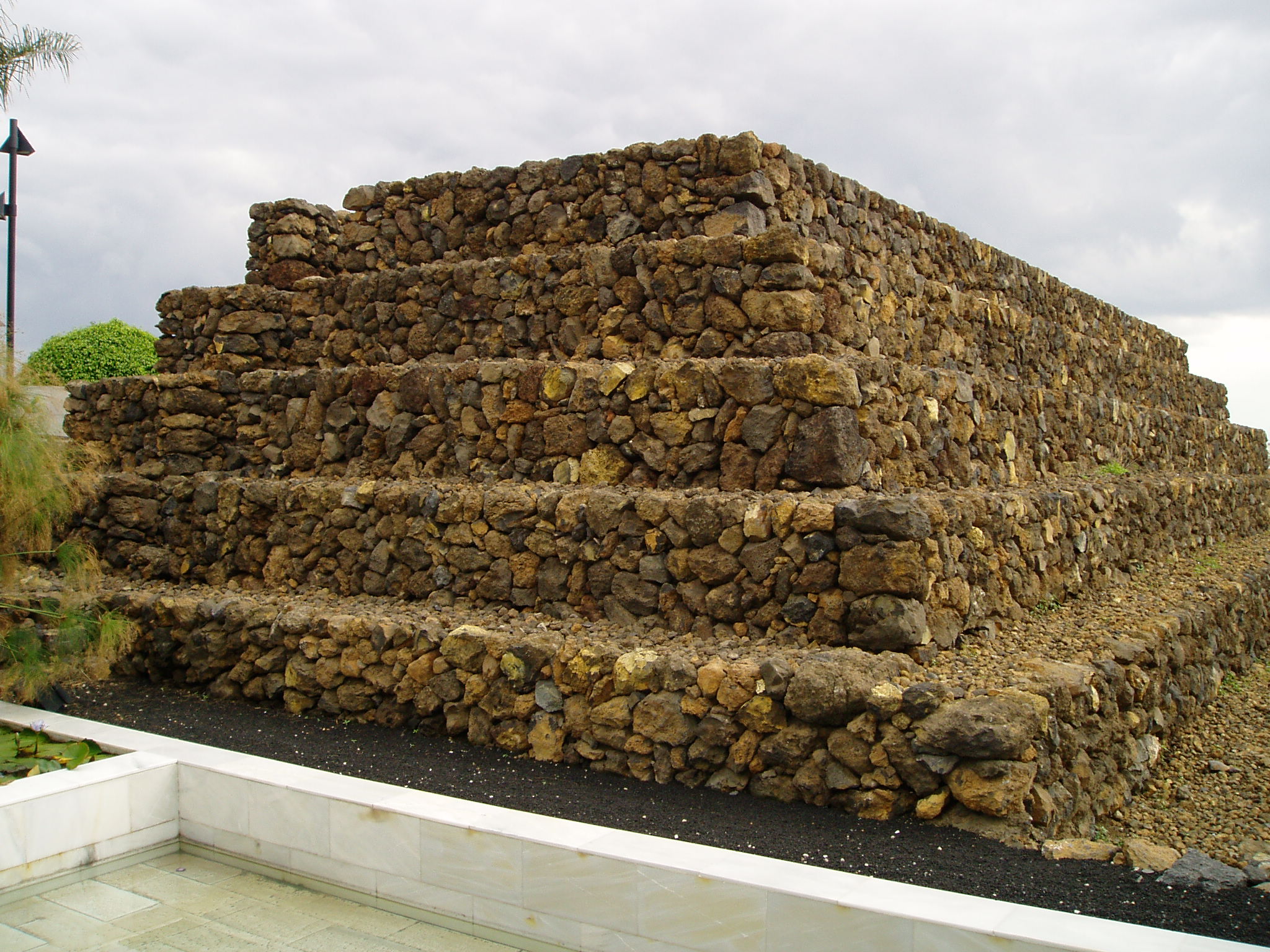
The Pyramids of Guimar, Tenerife
Spain is a country that appeals on so many different levels – culture and history merge with nightlife and beaches you’ll just want to laze around on – to create the ideal destination. It’s easy to see why Spain, its classy cities, along with its associated islands and resorts have been such popular tourist havens for decades.
You may also like to read
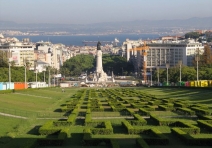
PORTUGAL
Tour-smart shows that Portugal, with its population of ten million, is no longer "Spain’s less glamorous relative".

GUERNSEY - CHANNEL ISLANDS
Introducing you to a dream vacation destination, Tour-smart brings you Guernsey, the second largest of the Channel Islands.

Comments